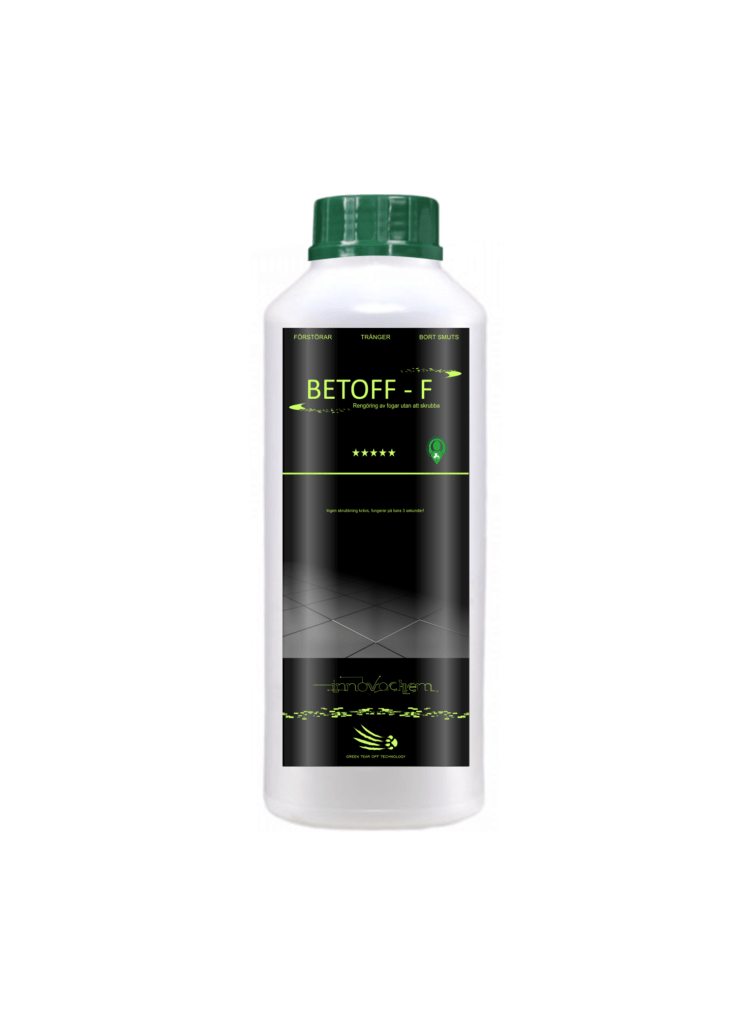Grouting tiles is not easy, but cleaning them with BETOFF-F liquid is!
What about your grout? You’ve undoubtedly picked out your tile, fixtures, paint color, and a ton of other items. If you choose a contrasting grout color, it can also serve as a major design feature, in addition to being essential for the upkeep and endurance of your tile. We can assist you in choosing the best grout type, color, and sealant for your tile installation by taking care of all the preliminary work.
Grouting tiles. Which kinds of grout are there?
Your tile’s longevity will be greatly influenced by the type of grout you use, and different varieties will work better in certain situations. Let’s look at your options:
Epoxy: Resistant to water damage, stains, and harsh cleaning agents, epoxy grouts are the most resilient of all grout types. For spaces like bathrooms and kitchens where food and moisture are likely to be present, epoxy grout is a fantastic option. Epoxy grout is composed of two components: an activator and a base. When the two are mixed, a chemical reaction takes place, which means you don’t have much time to finish grouting before it sets and gets too hard to work with. Because of this, we advise using a professional tile installation when using epoxy grout. Although epoxy grout is the priciest option, it eliminates the need for a sealant, saving you both money and effort over time.
Sanded grout is a cement-based grout in which sand is incorporated into the mixture. Sand strengthens the grout’s internal bond, preventing it from shrinking and splitting, while also preserving its slip resistance in damp environments. For installations where the grout lines are wider than 1/8 inch, such as our glass tile, sanded grout works best to prevent shrinkage and cracking.
Unhanded: For smaller joints with a 1/16 to 1/8 inch spacing, unhanded grout is a cement-based mortar. Because unhanded grout shrinks too much and doesn’t have enough sand for adherence, it can split when utilized in bigger joints. Because unhanded grout is “sticky” and will not move while being applied, it is easier to work with on vertical walls.
Grouting tiles. Why and when should grout be sealed?
When working with light-colored grout and in places that are prone to moisture, sealing your grout is essential. Epoxy grout is the only kind of grout that comes pre-sealed and doesn’t need a sealant. Two types of grout sealers are commonly available: spray-on and application sealers. Using a roller or brush, application sealers are put straight onto the grout. While applying sealants requires less effort and accuracy, the cleanup process afterward takes longer.
Grouting tiles. Which color grout should I use?
Selecting a grout color can be difficult because there are so many alternatives available, and the grout color can significantly affect the entire design. The grout color has a significant effect on how well your tiles are maintained as well. For instance, darker grout will conceal stains but may fade more easily and stain lighter tiles (if you choose this option, test a small area first). Lighter grout will stain more easily and be more difficult to clean. Remember that color is everything, so go slowly.
When selecting a grout color, you have three major options:
You can coordinate the grout color with the tile color: We advise matching the grout color (or merely coming near to it in tone if you have chosen a light color) if you want your tile to be the focal point of the room. By doing this, the grout line’s design will not be obscured from view.
You can decide on a grout color that contrasts: The pattern on the sheet will be emphasized with a contrasting grout.
You could always go with a neutral grout because it goes with everything and is often a safe choice. As you can see in installations with contrasting grout, the pattern will stand out more than a matching grout but still not take center stage.
Which grout size works best?
Every tile installation raises the issue of the tile grout line’s size, and we have inquiries about it on an almost daily basis. Your tile installer could advise a wider grout line for an easier, more polished installation since, when it comes to size, remember that the closer the grout line, the more variations between the tiles will be, which can make the installation appear sloppy. Choosing to go a little tighter or a little bigger is purely stylistic.
When it comes to grout line size, keep the following points in mind:
The degree of size variation between tiles: Tiles vary greatly in size and thickness from one another because every single one is produced by hand and burnt. When it comes to handcrafted tiles to get rid of these abnormalities, we always advise broader grout lines.
Tile Edge features: The various grout line features found in each of our product lines aid in determining the appropriate grout line size. Our recycled tile is in the middle, with a somewhat cushioned edge, while our glass tiles have a rounded, cushioned edge. Our EDGE product line has a precise, rectified edge.
Tile Size: Take into account the tile’s dimensions while selecting the grout line size. Broader handmade tiles typically require a broader grout line since they come in a wider variety of sizes.
Where the Tile is Installed: Take into account the tile’s installation location while selecting the grout line size. For instance, to improve adhesion while installing floor tiles, think about using bigger grout lines. The grout line size should also be taken into account when there are variations in the surface’s angle. The grout line will slope from one tile to the next if your surface is not level. Additionally, bear in mind that the grout line will widen while tiling a corner and will narrow at the top when tiling a recess.
The look you’re going for: Here’s where personal preference comes into play: the size of the grout line has the power to drastically alter the overall appearance of your tile installation. While some people desire grout lines to be as subtle as possible, others like them to stand out and become an integral part of the design.

